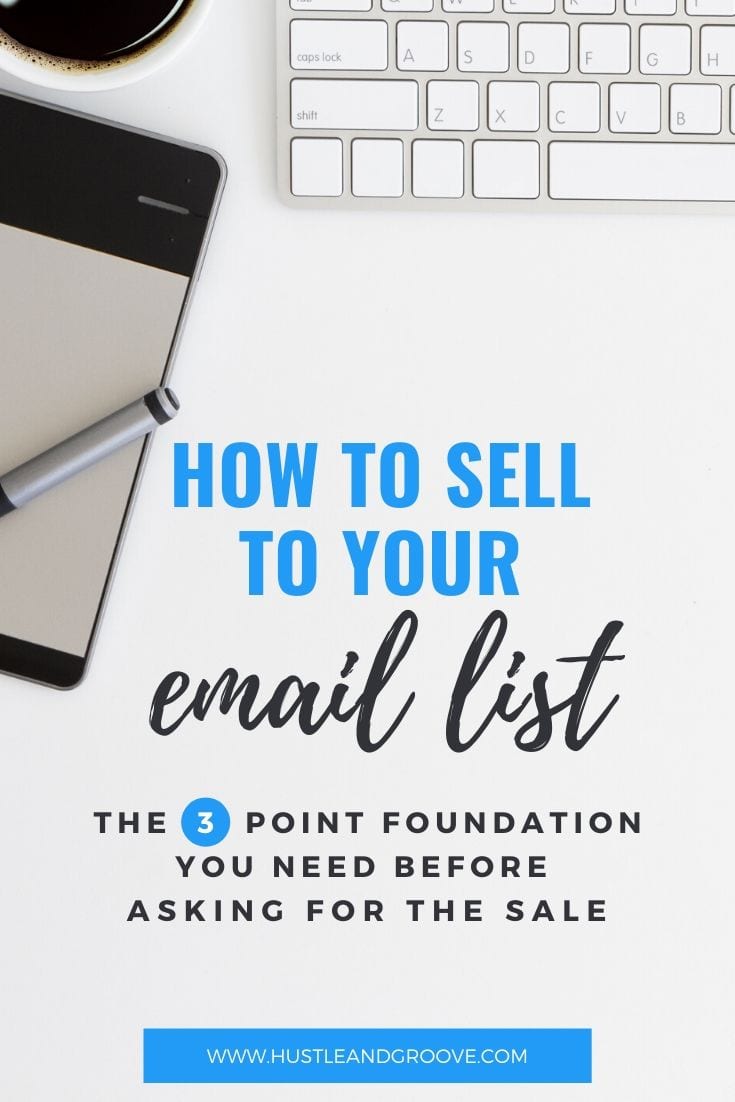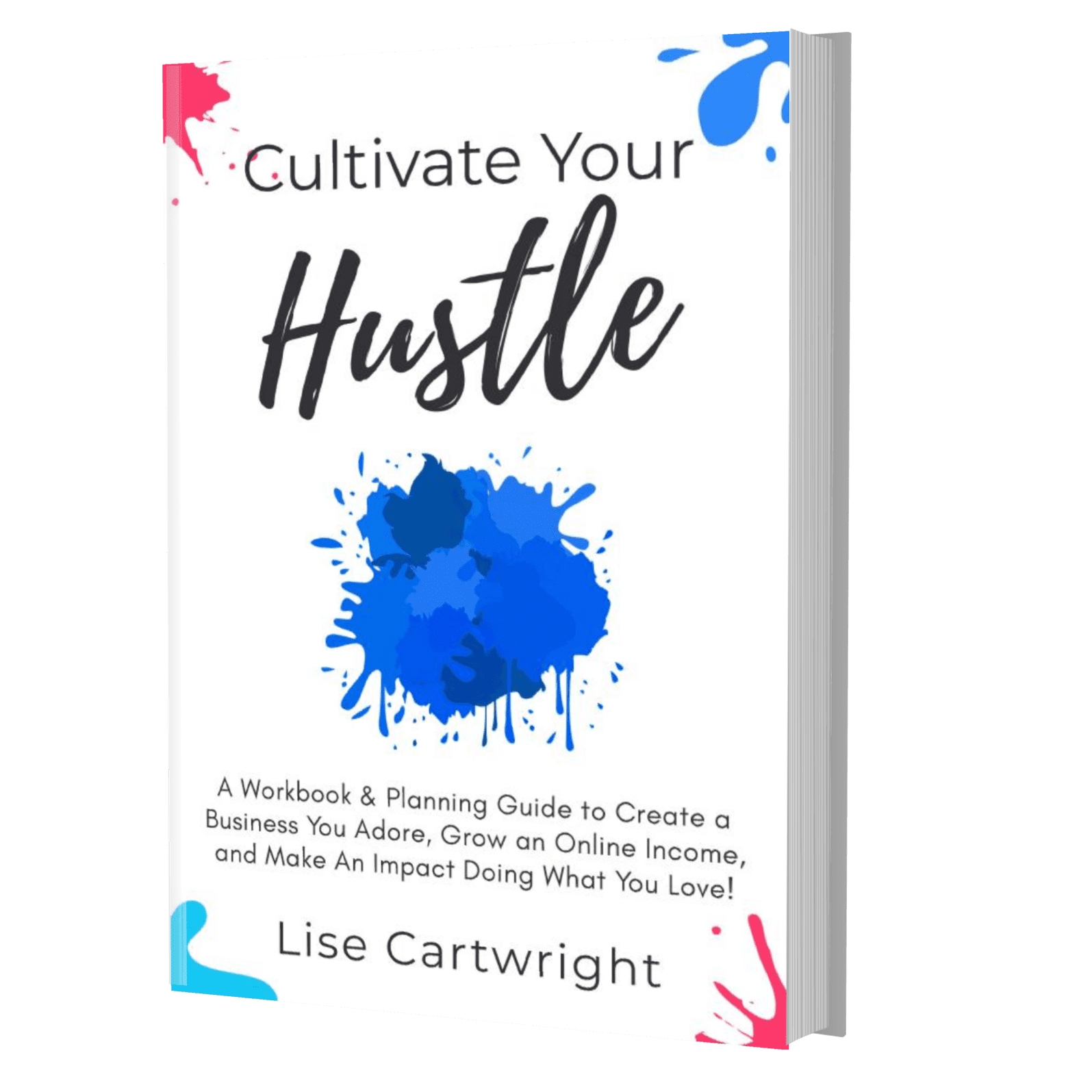Want an easy list building strategy for attracting customers into your world?
The starting point before you can do anything like grow or monetize your email list is to know who your audience is and what lead magnet you will provide them.
You’ve gotta know who you're serving and how you’re serving them.
If you want to make money in your online business, your email list will be part of that, maybe the biggest part.
You also need to know what the best lead magnet will be that funnels people into your email list. What will prompt them to hand over their email address? A lead magnet that's of high value and something that will help your audience.
Once you have those two fundamental pieces figured out, the next piece is deciding how to sell to your list in a way that's not spammy.
Before you can actually sell to a new member of your email list, though, you need to nurture them into your business.
Think about it from a normal, human being perspective. You wouldn't try to get someone to marry you on the first date, right? So why would you try to sell to somebody who just joined your list?
That is spammy because they don’t even know you and you don’t know what they need yet.
Instead, you need to build up a solid foundation or relationship and get them to know, like and trust you.
How do you do that? With an email nurture sequence.
Table of Contents
Nurture Your Email List
I was guilty of not doing this when I first started. The minute someone got onto my email list I thought I was supposed to go for the sale, selling my books, affiliate products, and all those things. The results were not great. The feedback I got was a lot of unsubscribers and it hurt. I’d done a lot of work to get them onto my list in the first place and I didn’t know that I was doing it wrong.
I can tell you this…
If you spend a little bit of time nurturing a new subscriber when they join your list, you will be in a much better position to sell to them. You will have started a relationship. They will know more about you, and at the end of the nurture sequence you will know more about what they need from you.
How can I sell to my list?
The words sell, sales, or money might trigger you in different ways. The same goes for your subscribers. We all attach emotions to those words. Selling is not bad as long as you are serving, and if you feel icky selling to your list then you're likely doing it wrong.
Remember this: you are not selling to make money, you are selling to serve. If you can switch into that mindset that you are helping and serving people, then it will be easier to create products and services for them. And in turn, make money.
I approach book writing the same way.
When you first start writing a book, you can be in your head about the end result.
Is anyone going to read my book?
Is anyone going to buy it?
Am I going to get negative reviews?
What will I do about that?
Is my writing even good enough?
All those things are ME ME ME.
I've always found that when I switched it around and focused instead on my actual reader, I could get out of my own head and focus on how I'm helping my reader and have a lot more confidence in completing the project and selling if afterward.
I focus on the person I’m trying to help, and make sure that the content meets their needs.
So when it comes to my email list or specifically, selling to my email list, my community, I make sure that I’m including everything they need, and the way I present the opportunity is something that is going to clearly explain to them how this can help them right now. I focus on results.
Whenever I focus on who I'm serving, I lose that ME ME ME mindset. I focus on the person or the people who are going to buy my products.
So I approach my online business the same way. I’m not focused on the fact I need to make money. First and foremost I want to help people. That’s why I got into doing this. Yes, I want to make money, but I’m doing it in a way that feels good, easy and fun to me. And that 100% helps people. You need to get into that place for your business.
The money piece will slip into place when you focus on serving first.
You’re serving and you also get to charge for that. When you run your own business, you are CEO, CFO, all those things and all those hats. That is no different from working for a business and getting paid a salary. It’s just that you are now the company. That’s a mindset shift and an important one to make.
I understand it takes a little while to make that shift because I’ve been there too! Keep reminding yourself you are serving.
If you’re worried that all you're focusing on is making money, you may need to switch your focus and make sure you're serving first…, if you can switch your thoughts to serving and know and trust that people will pay you because you are serving them, it WILL become easier and more natural to do this over and over again.
The New Subscriber Process
Nurturing a new subscriber to your list doesn’t have to take a long time. The first 30 days someone is in your world, they need to get to know, like and trust you. It’s only after that time that you should consider selling to them.
Specifically, it looks like this: a welcome sequence is 5-7 days long and they hear from you every day.
Think of it like welcoming someone into your home, since your online world is your online home. Welcome someone into your lounge! Pour them a cuppa and tell them about yourself. You can ask them some questions too, to see if they’re a good fit. I approach my welcome sequence in that way.
Now it’s your turn: If you were welcoming someone into your home, what would that conversation look like–but through a business filter?
Let's step through it…
Email #1
The first email that goes out when someone joins your list is the delivery of your lead magnet or free gift. This should be done asap, and automated from an email platform, like ConvertKit.
Remember that this is a conversation, so say something on the thank you page like “hey, check your email and if you don't see it within the next 15 minutes, check your spam folder”.
Small prompts like this go a long way to create a relationship and show you care. You could also mention, on the thank you page, that if this is the first time they’re hearing from you it might end up in their spam folder or under the promotions tab. Just let them know to look for your communication.
There is nothing you can do about it if it does go into a spam folder, but if they’re prompted to look for your email they can white-list you and never miss your emails again.

Email #2
The second email (day 2!) should be all about who you are, what you stand for, who you help, and who you can’t help. At the end of that email, say something like “hey, let’s start a conversation…what are you struggling within your business?”.
In my own business, the second email is probably the longest one in the welcome sequence because there’s a lot of information. I also want to give someone the opportunity to leave. I only want people who truly want to be in my world. I’m really upfront about that.
That’s why my subject line for that email is “Uh, are we gonna gel?”
I talk in my emails just as I would face to face, and I encourage you to do the same. You get to decide what yours looks like. Use your personality and be you, it’s your business and personality that they’ve signed up for.
I’m really clear in that email about who I don't want to be in my world. And that’s ok!
I say something like “If everything you've read up until this point doesn’t gel with you, please hit unsub. No hard feelings.” Be a normal person… you don‘t have to be mean about it.
Email #3
The next day, the third email that goes out provides even more value. Link to your top 3 blog posts, or deliver another lead magnet. Hit them with value first and they’ll be thrilled because it wasn’t what they were expecting.
I’ve changed this email a few times over the years. Right now, the third email I send to new subscribers links to a “Getting Started” page on my website. It features a ton of resources, like blog posts, videos, and links to products I use in my business. This is an extensive page and I’ve done that strategically. I want them to hang out on my website for a while and see what I’m all about.
You don't have to do that, though, if you don’t have those assets. You could deliver another lead magnet, or if you’ve got a YouTube channel or blog posts, send them there. If you have nothing, just provide a value-packed email. Don’t worry if you don’t have all these pieces in place yet. Keep it simple. Think about it from the reader's perspective. Show them something that could help them right now.
Email #4
The fourth email I send takes new subscribers to a video. In the 3 minute video, I answer the most common question I get at Hustle and Groove and the subscriber gets to see me and hear my accent. You don’t even need a YouTube channel to do this! You can just do it on your phone. Keep it simple. Upload to Dropbox, share the link, and bam! EASY!
In the video, I break down what they need to do to get started. There is a worksheet to download at the same time, more value of how I can help. They get to see more of your personality if you are on video.
Do what feels natural to you, but if you want to step out of your comfort zone, you cannot go wrong with video.
Email #5
The fifth email is all about the segmentation process. Segments help you categorize your audience into groups with similar interests or goals.
I have a new subscriber tell me where they’re at by giving them options like “Just starting out”, or “Looking to grow”, and each option has a link trigger attached to it. They “self identify”, or “self segment” according to where they’re at. Yours could be completely different, so think about how you want your list segmented.
Using the link trigger allows me to then segment within Convertkit.
Make sure to get the segmentation piece started so you can talk to people where they’re at. You need clear segments in your email list so that when you create offers you can go back to your email list and tell them only about the offers that pertain to what interests them.
Segments also allow you to drop them into a different email funnel, which could lead to a paid product.
Email #6
Within the last email, let them know what happens next. For me, I let them know that I’ll email them once a week.
If your email list is under 5000, then email them once a month. You don’t have to do anything more than that. That’s it. You can map out an entire year for your newsletter in a month. Batch it. Make it easy for yourself so you do it!
What do you say in a newsletter?
It depends on what you want your business to look like. In my weekly newsletter, I send out a link to my latest blog post. I literally give them a summary of the blog post and a link to go read it at the website.
If you don’t have a blog, all you need to do is craft an email and talk to your audience. What do you want them to know about? Maybe you need to let them know about what you’re planning to offer.
You should always be talking about your main topics. For me, those are email marketing, starting a side hustle, productivity, and how to create digital products. They all center around starting, growing or running an online business, and that’s my overarching topic. It’s solely digital. I can talk about how to create a course, workshop, a live program, bootcamp, etc. but I tend to stick around the main topics to keep things streamlined.
Your newsletter should be you, connecting with your audience. If you’re not connecting with them and meeting them where they’re at, it’s really hard to sell to them.
So that’s what you do to nurture your email list. It takes 30 days to go through your nurture sequence, plus at least one more communication (ie your newsletter). Then you can sell to them because a relationship has been established.
Don’t forget to segment your list
The segmentation piece is really important to keep your subscribers in your list. I’ve created offers for beginning, intermediate, and advanced. I don’t want to sell beginning offers to my advanced list.
Decide what your segmentation looks like based on the offers you have or want to create. Have an offer for each of those segments and each month you can intentionally sell one of those offers. Send out an email once a week, building up to the offer. When you have offers to talk about, and products that your audience wants (this is key!), it’s easy to sell to them.
Your Next Step
If list building is the thing you’re struggling with that you want to focus on, start that process now. You have lots of different ways to build an email list and if you're lost on where to start, check out either Leads on Autopilot or List Building Made Easy mini-courses here.
